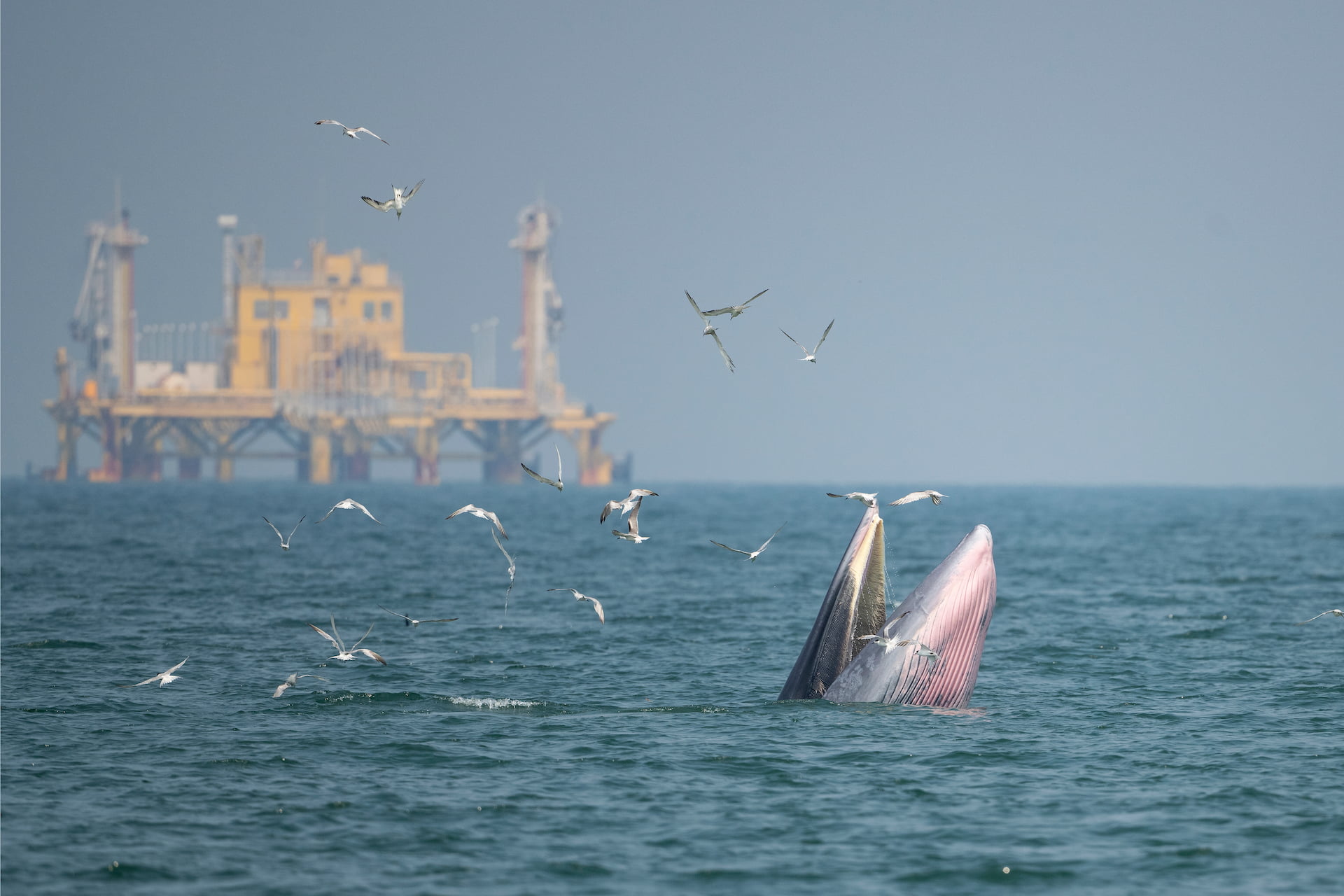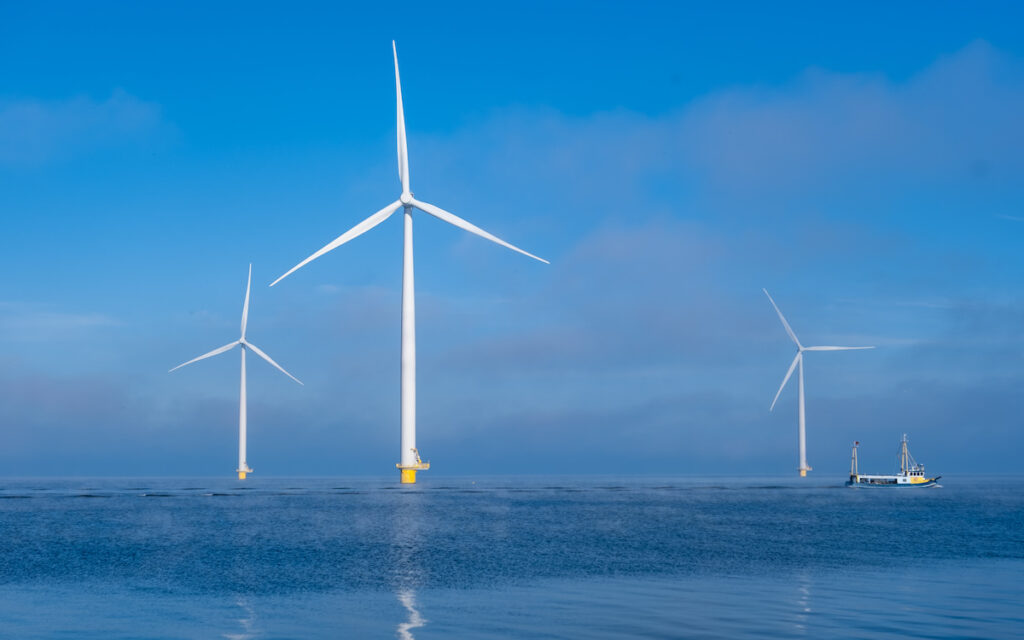Drilling Into the Differences Between Offshore Oil Drilling and Offshore Wind
Why it’s so important we keep working towards 100% clean ocean energy by 2050

It took Hurricane Helene just three days to travel from the overly warm waters of the Gulf of Mexico to the mountains of North Carolina, causing incredible damage and loss of life. Hurricane Milton also moved fast, intensifying from a Category 1 to a Category 5 hurricane in a single day, before hitting Florida with incredible winds, tornados and flooding. Climate change is propelling these weather events to grow faster and stronger than ever before.
Other climate change impacts are accelerating as well. Consider the record-breaking warm ocean temperatures of the past year, which has caused the largest coral bleaching event on record, habitat loss and species migration. Many scientists thought these high ocean temperatures would be years away, but the realities of climate change are not a distant threat. The speed at which they have arrived must drive us to act.
Get Ocean Updates in Your Inbox
Sign up with your email and never miss an update.
Addressing climate change is a top priority for Ocean Conservancy now more than ever. If we are to protect the ocean, its marine ecosystems and the people who depend on them, we must address climate change at its root: the burning of fossil fuels for energy. But this cannot happen without clean-energy solutions, such as offshore wind and other marine renewables, that can replace them.
That is why Ocean Conservancy is leading a comprehensive effort to shift the ocean to a source of 100% responsible clean energy generation by 2050. By stopping harmful offshore drilling of oil and gas and harnessing the natural powers of the ocean for clean energy, the ocean has the power to be a climate solution instead of just a victim.
Aiming for 2050 may seem far off, but it’s precisely this kind of forward thinking we need to be successful.
Energy development is a multi-decade process. Decisions we make today—positive or negative—will be locked in for generations. When new offshore oil wells are drilled, they can continue pumping oil for 30 years or more. In August 2024, Chevron began operating a new deepwater project in the Gulf of Mexico that could pump oil into the 2050s. Additional deepwater Gulf projects that could have similarly long lifespans are being developed by BP, Shell and others. And new lease sales could push offshore oil drilling into 2080’s.
Now is the time we need to stop new offshore oil and gas leasing and drilling and start holding operators accountable for cleaning up the messes they have already made. Simultaneously, there is much work we need to do from now through 2050 to nurture the responsible development of clean ocean-based energy replacements for dirty fossil fuels. It will take smart planning and coordinated strategies to ensure offshore wind is developed responsibly, preventing and minimizing impacts to marine life and other ocean users. Working together, responsible offshore wind can help power our lives and communities, without the risk and harm that fossil fuels have caused to our ocean for a century.
Consider these distinct differences between fossil fuels and clean-ocean renewables like offshore wind:
Offshore wind does not produce the harmful emissions that warm our planet. If you compare the emissions created from offshore wind over its lifetime to how much energy it produces, offshore wind is significantly better for the planet than oil and gas. Wind energy produces roughly only 11 grams of carbon dioxide per kilowatt-hour (g CO2/kWh) of electricity generated. In contrast, emissions from natural gas produce roughly 465 (g CO2/kWh)—more than 40 times higher. Fewer emissions equal less carbon warming our climate and cleaner air for people and wildlife.

Offshore wind is American energy, providing energy security to communities. Fossil fuels (such as natural gas, oil and coal) are global commodities that are imported and exported. This means global events and market shocks can significantly affect supply chains and costs. Some states, like California, Maine, Maryland and others, import sizable amounts of the fossil fuels they use to produce electricity. Other communities (including villages in Alaska and Small Island Developing States in the Pacific) that are not connected to broader power grids are forced to import nearly all the fuels, like diesel, needed to produce electricity. Offshore wind and other renewable energy sources offer alternatives for these communities to build energy independence and resiliency to keep the lights on at a stable price.
Offshore wind does not come with the risks we have experienced from offshore oil drilling. It’s no secret that offshore drilling is risky business—with inevitable oil spills causing irreparable harm to our ocean environment and nearby communities. Over the past 50 years, at least 44 major oil spills have occurred offshore, each dumping more than 10,000 barrels (420,000 gallons), as well as thousands of minor spills affecting U.S. waters. Additionally, offshore drilling produces routine pollution every day in the form of discharges into the water and emissions into the air through flaring and other processes. This pollution adds up. Even when oil production stops, the impacts continue: Offshore oil operators have discarded more than 18,000 miles of disused pipeline on the ocean floor and have missed cleanup deadlines, leaving thousands of wells and hundreds of oil platforms in the ocean unmonitored.
The time is now to plan, coordinate and act to shift the ocean to a powerhouse of clean, responsible energy for the generations to come. If we harness the power of the ocean, we can rein in climate change and meet our world’s energy needs. Together we can change course.
You can join forces with us at Ocean Conservancy by taking action to phase out dangerous fossil fuels and support clean energy.